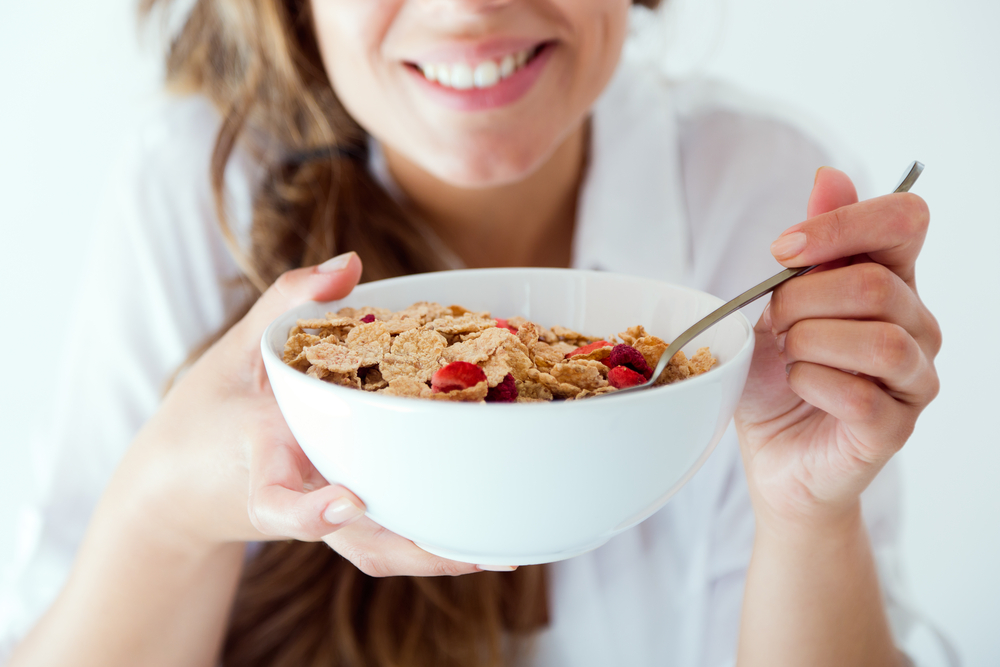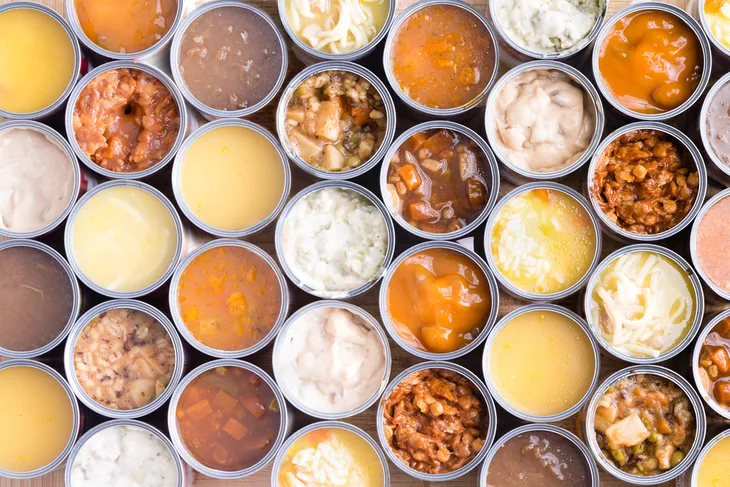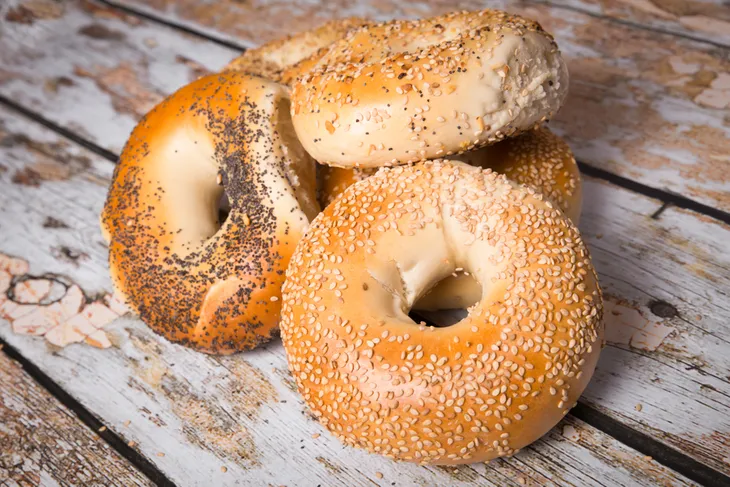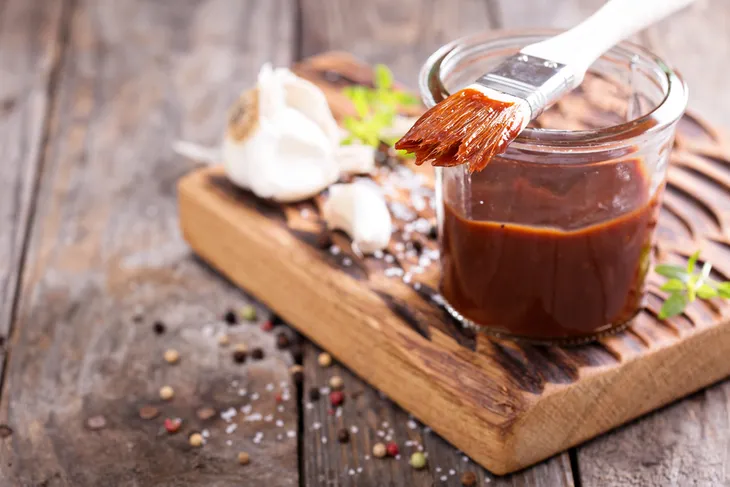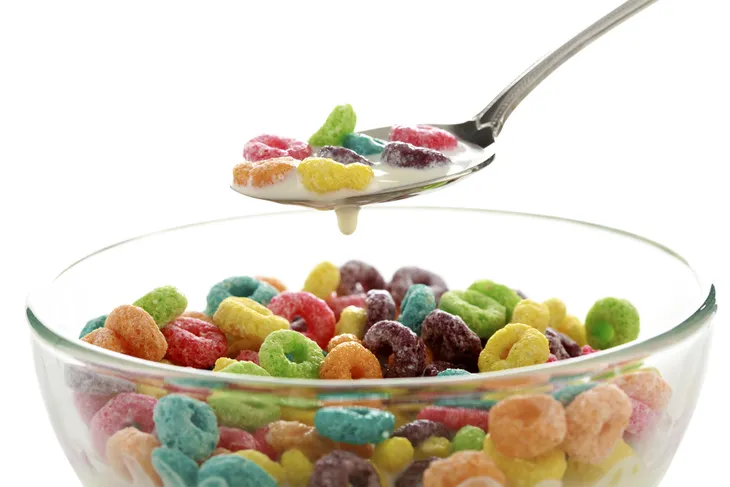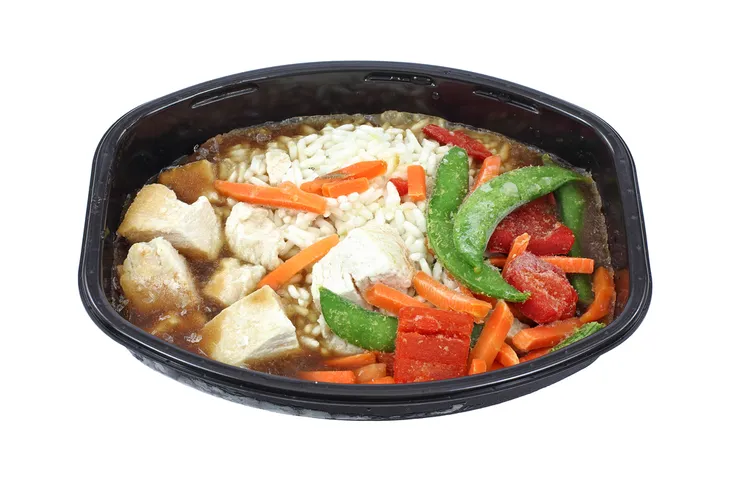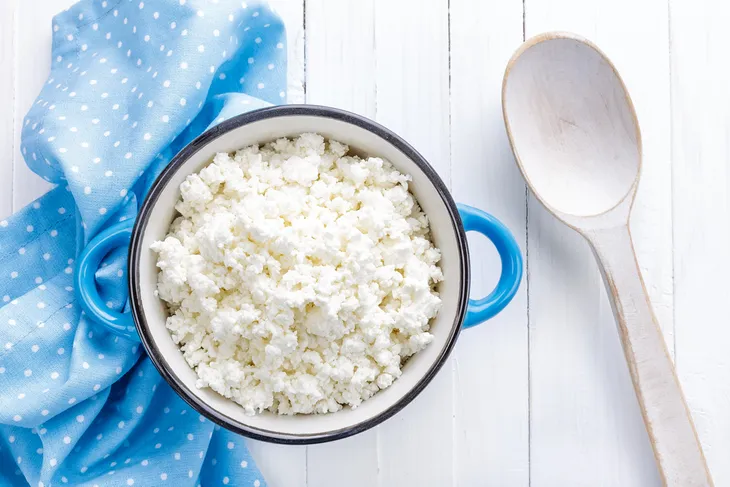According to the health experts at Mayo Clinic, average, healthy adults should consume no more than 2,300-milligrams of sodium per day (1,500-milligrams if you have high blood pressure). That means that noshes like salted nuts and savory snack foods (i.e., chips) that obviously contain a whole bunch of salt are off the menu.
However, these eight foods are sneaky high-sodium sources that result in uncomfortable belly-bloating, water retention, and high sodium levels…
Canned Soups
Look at the sodium content on your favorite can of vegetable, chicken noodle or tomato soup and I dare you not to gasp! You’d expect a veggie-based soup to pack a ton of nutritious vitamins, but not almost 50-percent of your daily sodium limit.
I’m guilty of bringing canned soup to work for lunch, myself. However, now that I’m aware that it’s a sneaky harbinger of salt, I’ve started purchasing no-salt-added soups or making my own at home. Prepare your slow-cooker with a homemade soup and flavor with fresh herbs and just a tiny pinch of salt.
Bagels
Bagels are a convenient grab-and-go breakfast, lunch, or snack option. However, according to the Centers for Disease Control and Prevention (CDC), your favorite savory baked good with the hole in the middle can pack up to 450-milligrams of sodium (or almost 20-percent of your daily sodium allotment). And that’s just a plain old bagel not a flavored bagel!
If you can’t give up your favorite toasted morning meal, reach for thin bagels or thin rye bread at the market instead. This will cut the hidden sodium by half. You can also try making your own bread or buns at home using whole grains and only a pinch of salt. According to registered dietitian, Julie Ching, the appropriate portion for a bagel is less than half. To reduce excess calories and sodium, try scooping out the bagel.
Chicken Breasts
I didn’t believe it either, but about a month ago while I was shopping for chicken breasts to make a weekly stir fry I noticed that the package label on the raw chicken in my cart contained a sodium level. I understand that meat may naturally contain salt, but not that much!
Low and behold after doing some research I discovered that many manufacturers inject raw meat with high-sodium flavor enhancers to take the taste up a notch. This is exactly why I now buy organic or meats with “all-natural” ingredients and no additives or flavor enhancers. I, personally, like to know exactly what I’m feeding my family.
Soy Products
Soy-based foods are often great sources of meat alternatives for vegetarians or vegans as they blend well with recipes that call for meat (i.e., chili or pasta). However, if you inspect the labels closely, you’ll note that many soy products, like veggie burgers, sliced faux meats, and soy cheeses, contain a lot of sodium,
For instance, it turns out that my favorite brand of veggie burgers were sneaking about 500-milligrams of salt into my diet, per patty. So take a close look at labels before you buy and note that many soy-based foods contain a huge amount of highly processed ingredients, including salt, for flavor enhancement.
Barbecue Sauce
Put down that saucy brush and step away from that chicken! That barbecue sauce or meat marinade likely contains a whopping 300-milligrams of salt in just 2 tablespoons (that’s a tenth of your daily limit in just 2 measly tablespoons).
I realize a honey barbecue or garlic meat sauce often tastes sweet not salty. However, look at the label—the majority of store-bought BBQ sauces will shock you with their out of control sodium content. To cut salt, look for low-sodium brands (and read the label to make sure) or make your own meat marinades minus excess salt.
Cereal
You might think that your favorite bowl of Cheerios or Frosted Flakes doesn’t contain salt—it’s a breakfast meal after all! However, if you inspect the nutrition information closely on the box, you’ll be shocked to see between 200- and 300-milligrams claimed by a single serving.
Breakfast should be the most nutritious meal of the day—as it sets the tone for your entire day. Too keep the salt from sneaking into your morning meal opt for an organic breakfast cereal or a boxed variety with no salt added. Alternatively, seek out plain whole oats and top with fresh or frozen fruit and a touch of honey or real maple syrup.
Frozen Meals
Another popular convenience option for work lunches and brisk dinners, frozen meals are more than often packed with hidden salt—to the tune of almost 1,000-milligrams of sodium per tiny meal. While the so-called “low-sodium” meals still often contain 750-milligrams of salt or more. So not low sodium at all.
If you’re truly opting for a low salt convenience meal, look for labels that state no more than 35-milligrams of sodium or less, per meal. Alternately, you can slow cook chili, stir fries, or stew and freeze individual containers for lunches and quick dinners throughout the week.
Cottage Cheese
If you’re trying to shed some pounds by working out while increasing your protein levels, cottage cheese is often recommended as a snack by the iron-pumping crowd. Sure, cottage cheese is low in fat, and high in protein and calcium, but it also contains a surprising amount of hidden salt—even though it doesn’t really taste that salty.
In fact, most store-bought brands of cottage cheese contain roughly 1,000-milligrams of sodium per serving—that eats up almost half of your daily intake. Luckily, you can easily find low or no-salt-added cottage cheese and still get your low calorie, high protein snack. Or switch to creamy high protein plain Greek yogurt instead.
